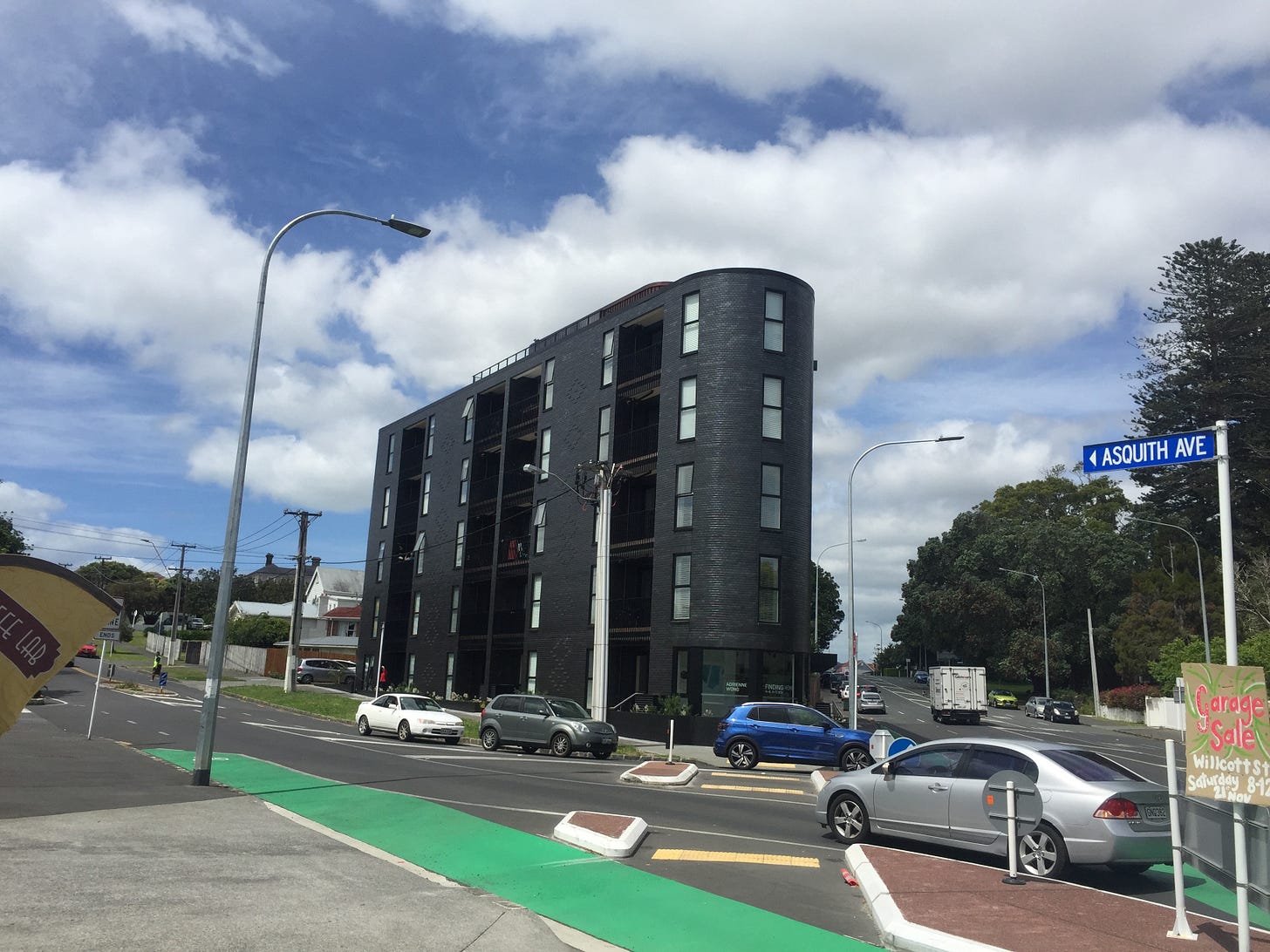House prices are falling, and this is good, but it doesn’t mean the housing crisis is over.
Despite record house building, we still likely have a shortage of housing relative to the population. Kiwibank estimated the shortage to be at 23,000 homes nationwide in June 2022. As of September 2022, there was still a waitlist of 24,996 for state housing. We also have tens of thousands of damp and mouldy homes that have high costs on individuals and our health system.
Higher interest rates are leading to the slowdown of new build sales in our major cities. This is noticeable, as some of the largest developers including Ockham Residential and Williams Corporation are now struggling to sell units and the latter is starting to lay off staff.
If this does become a consistent trend throughout 2023, this is not good for several reasons.
A continuation of historical boom and bust construction cycles will lead to a reduction in the construction workforce, and a slower market response to build new homes when demand in the market picks up again. In November, we saw net population growth of 6000 people, which may be a return to pre-covid immigration trends. Building consent rates continue to remain high, which is great news, but if this construction downturn does occur while immigration starts to increase, we could very quickly see the housing shortage start to grow again.
We have poor quality housing stock, as the New Zealand Green Building Council have been highlighting with their new campaign. The last Census found that over 250,000 homes are mouldy and over 300,000 are damp. While retrofitting these homes is important, replacing many of these with higher density housing is critical for our future and overall housing supply.
We also have housing stock which, due to historical restrictions on where and what you could build, doesn’t match the general trend in smaller household sizes. The lack of smaller and more affordable units sees more students and young professionals competing for larger rentals against families. It is important to continue to grow our housing supply, particularly supply of smaller units, that are also more affordable.
Of course, developers have options of their own to keep construction going. This is particularly important for those that are vertically integrated. Ockham Residential has a track record in the Built to Rent sector (BTR) and they are about to start construction on a new 36-unit Build to Rent development shortly. Williams Corporation has shifted many unsold units into long-term rentals. They are seeking new capital investment through targeted efforts in places including Singapore.
However, these options may not be enough to maintain construction rates. Given the need to continue construction rates as outlined above, I believe the government needs to consider what action they can take should construction rates start to decrease significantly.
One obvious area is improving competition and supply of building materials to reduce construction costs. The Commerce Commission’s market study into residential building supplies recommended introducing competition as an objective to be promoted in the building regulatory system, as it currently favours existing products. The report also recommended removing impediments to product substitution and variations, post consent having been awarded.
Another option could be expanding or accelerating the Kāinga Ora social housing programme to maintain the residential construction workforce. After all, there is currently a waitlist of nearly 25,000 for social housing. An expansion could include taking on some consented private developments which meet strategic considerations such as maintaining our mid to high-rise construction sector, well-located housing close to jobs, transport and amenities, and of course homes that meets the unit sizes and requirements of tenants.
Now the elephant in the room is that any measure to stimulate or prop up the construction sector is likely to work counter to the Reserve Bank's measures to reduce inflation. However, there are significant benefits from maintaining construction rates and workforce, and greater housing supply. Housing is a key social determinant of health and wellbeing, influencing physical and mental health, education and job prospects. Therefore, measures to maintain residential construction rates, continue to increase supply and improve housing stock, are essential for the government to take.






Great post Malcolm. It looks like some steps have been taken toward your second option: https://www.hud.govt.nz/news/developers-can-now-apply-for-funding-through-the-build-ready-development-pathway/
Another great article Malcolm! News out two days ago from the Government accepting eight of the nine recommendations from the market study into building supply competition:
https://www.beehive.govt.nz/release/government-taking-action-improve-building-supply-competition